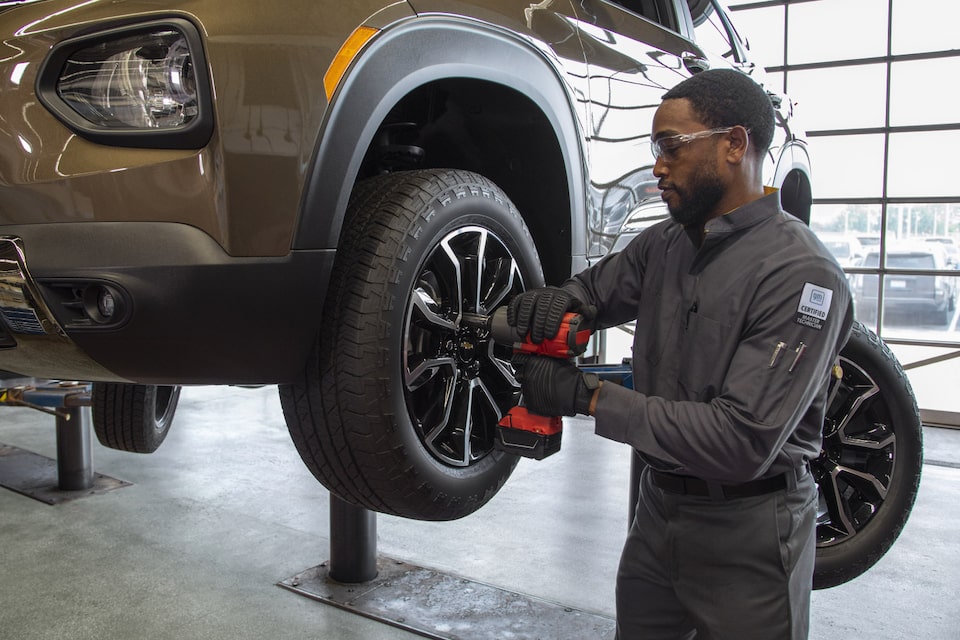Tire Service: The Impact of Climate Condition
When it concerns making sure ideal performance and security when driving, recognizing the effect of weather on tire service is essential. From scorching warmth to icy roads, each weather condition aspect can considerably affect tire performance and total driving experience. By delving into the effects of differing weather problems on tires, vehicle drivers can gain beneficial understandings that might boost their vehicle's performance and longevity. In this conversation, we will discover the intricate relationship in between climate condition and tire solution, clarifying the value of weather-specific tire maintenance methods and factors to consider.
Warm and Tire Performance
When exposed to heats, tires experience modifications in efficiency that can significantly affect lorry safety and handling. The warmth produced from long term driving or warm climate problems causes the tire rubber to soften, causing minimized tread life and enhanced wear. As the rubber becomes softer, the tire's hold on the roadway decreases, influencing stopping ranges and total grip. In severe instances, extreme warmth can also create tire blowouts, presenting an extreme security threat to the automobile and its residents.
Additionally, high temperatures can accelerate the process of tire aging, causing the rubber to deteriorate a lot more promptly. This can lead to splits, protrudes, and various other forms of damages that jeopardize the architectural stability of the tire. To reduce the impacts of warmth on tire efficiency, chauffeurs need to regularly check their tire stress, revolve tires to ensure even use, and inspect for any indications of damage. Furthermore, using tires especially designed to stand up to high temperature levels can assist preserve optimal performance and safety and security when traveling.
Cold Climate Impacts
Cold weather problems can have a considerable influence on tire performance and safety and security. In cold weather condition, tires might likewise lose air pressure a lot more quickly, which can impact dealing with and gas efficiency.
To mitigate the effects of chilly climate on tires, it is essential to on a regular basis check tire pressure and inflate them to the maker's advised degrees. Using winter season or all-season tires made for winter problems can likewise improve traction and grasp on icy or snowy roads - mopar tire service specials. Appropriate tire upkeep, consisting of normal evaluations for wear and damage, comes to be also much more official website crucial during cooler months to make certain optimum efficiency and safety
Rainy Issues Impact
Tires with damaged treads are a lot more vulnerable to hydroplaning, where a layer of water builds up in between the tire and the road surface, leading to loss of grip. To fight this, motorists should frequently evaluate their tires for adequate walk deepness and consider spending in tires specifically created for wet problems.

Snow and Tire Safety
When driving in snowy problems, having the ideal tires can make a substantial distinction in safety and efficiency. Wintertime tires are designed with unique rubber substances and walk patterns to give better grip on snow and ice compared to all-season tires.
Along with making use of winter months tires, it is crucial to guarantee they are effectively inflated. Cold weather condition can cause tire pressure to go down, influencing traction and handling (tire shop morris). Frequently checking and maintaining the appropriate tire pressure is important for optimum efficiency in snowy problems

Weather-Related Tire Maintenance
Weather-related tire upkeep encompasses a variety of techniques intended at making certain optimal tire feature and long life in different weather scenarios. One essential facet of weather-related tire upkeep is tire stress guideline. Inspecting tire step frequently and replacing tires when tread wear gets to a certain deepness is essential for keeping traction and stability in negative climate.
Conclusion
In verdict, weather conditions have a substantial effect on tire performance and safety (discount tires morris il). From warm impacting tire pressure and wear to chilly weather condition lowering traction, it is important to take into consideration the weather condition when keeping and making use of tires.
In this conversation, we will check out the intricate partnership between weather problems and tire solution, shedding light on the importance my site of weather-specific tire maintenance practices and considerations.
